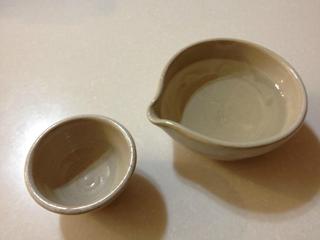"Hinamatsuri" means Doll Festival.
that's girl's celebration day for wishing and congratulating so that they grow up healthily.
On March 3, we set up dolls for the Doll Festival.
It is said that the doll exorcizes foulness and protects from misfortune.
Dolls for "Hinamatsuri" is below.


"Odairi-sama"
He is Emperor.

"Ohina-sama"
She is Empress.

"Sannin-Kanjo"
They are court ladys.



"Gonin-Hayasi" they are five court musicians.
(My daughter doesn't have.)
that's girl's celebration day for wishing and congratulating so that they grow up healthily.
On March 3, we set up dolls for the Doll Festival.
It is said that the doll exorcizes foulness and protects from misfortune.
Dolls for "Hinamatsuri" is below.


"Odairi-sama"
He is Emperor.

"Ohina-sama"
She is Empress.

"Sannin-Kanjo"
They are court ladys.



"Gonin-Hayasi" they are five court musicians.
(My daughter doesn't have.)
























